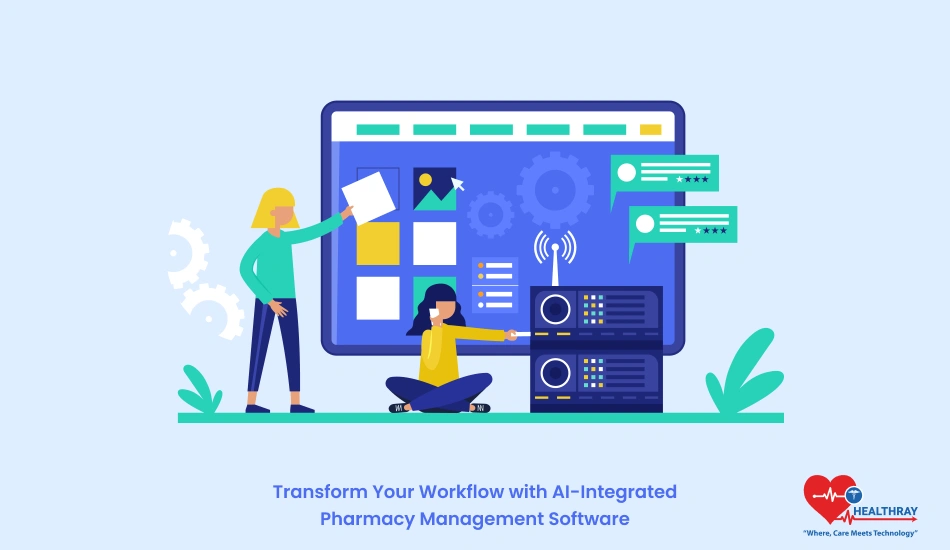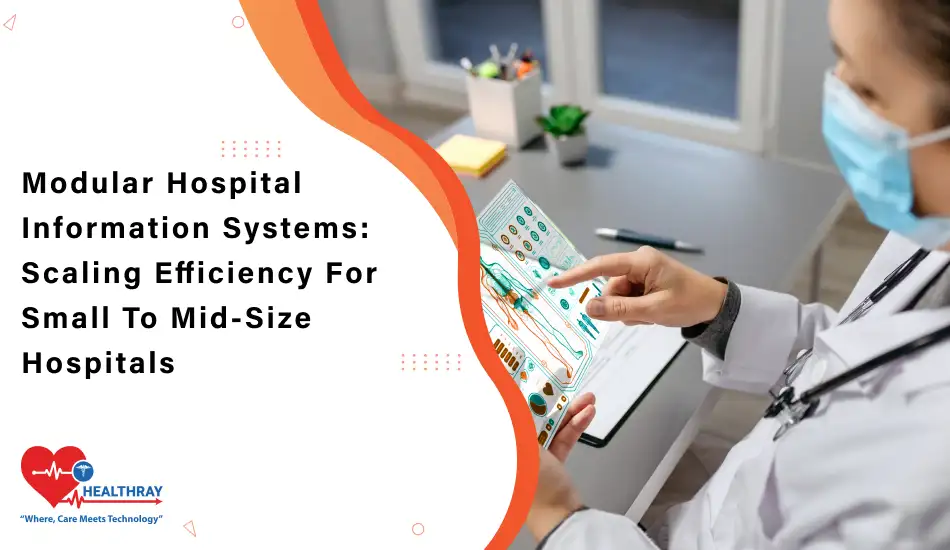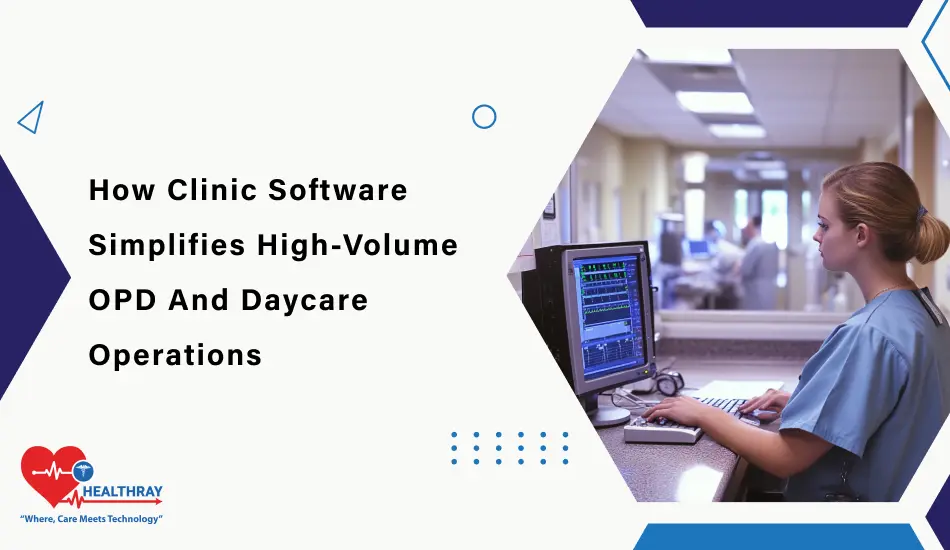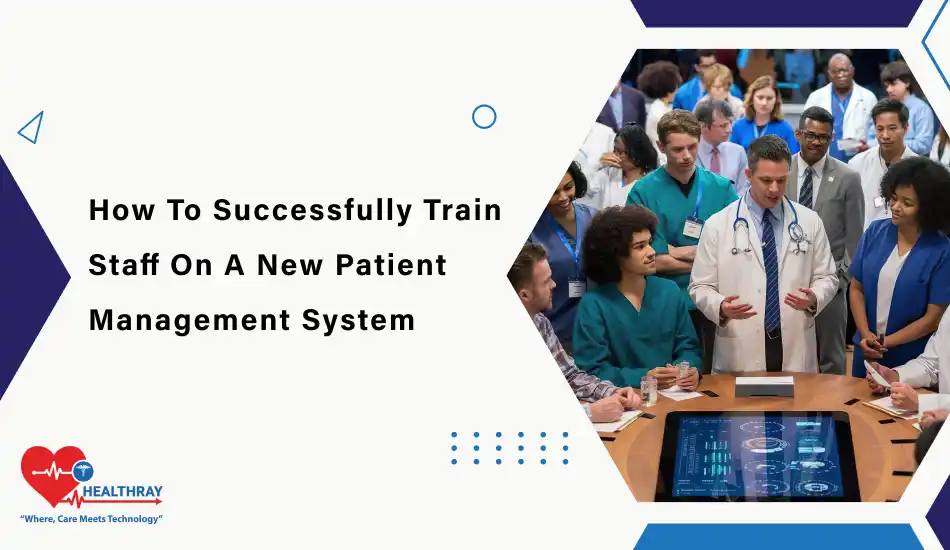Managing a pharmacy is no easy task. There’s inventory to track, prescriptions to fill, staff to manage, and compliance regulations to follow. With so much to juggle, even small inefficiencies can add up, costing time and money. This is where AI-integrated Pharmacy Management Software (PMS) comes into play.
AI isn’t just for tech giants anymore—it’s revolutionizing everyday businesses, including pharmacies. By integrating artificial intelligence into your Pharmacy Management System, you can streamline operations, reduce errors, and enhance patient care. From automating routine tasks to providing insights that help you make better decisions, this technology is reshaping pharmacy workflows.
Understanding AI-Integrated PMS
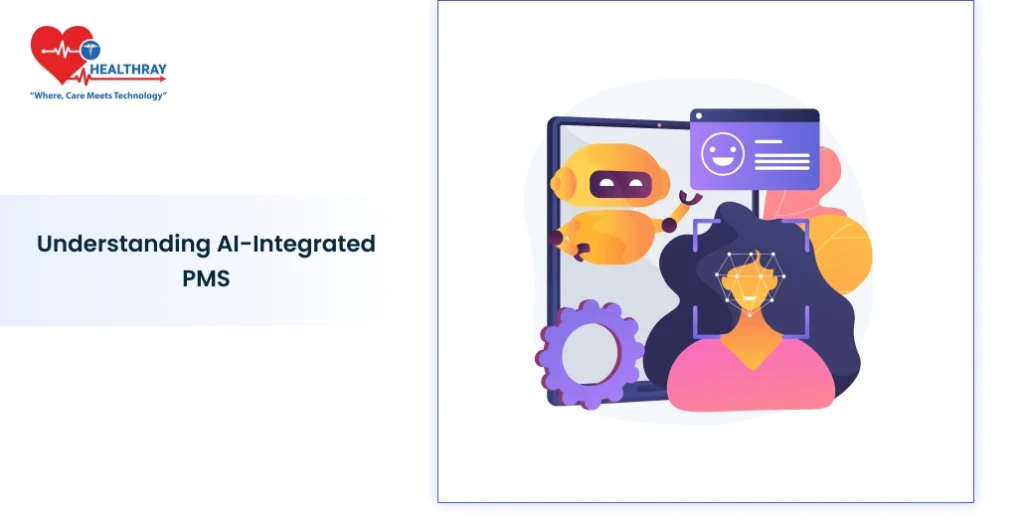
At its core, a Pharmacy Management Software (PMS) helps pharmacies handle daily operations such as inventory, prescriptions, billing, and compliance. When artificial intelligence enters the mix, it supercharges these capabilities.
What is AI-Integrated Pharmacy Management Software?
AI-integrated PMS uses machine learning, predictive analytics, and automation to make your pharmacy operations smarter and faster. It’s not just about replacing manual tasks but improving how they’re done. For instance, AI can analyze customer patterns to forecast demand or identify potential inventory shortages before they happen.
How Does It Work?
AI-integrated PMS works by collecting and processing data in real time. For example:
- Inventory Monitoring: AI can track inventory levels and automatically reorder stock when it’s running low.
- Prescription Analysis: It can cross-check prescriptions against patient records to flag possible drug interactions or errors.
- Operational Insights: The system provides actionable data to optimize staffing, reduce waste, or improve workflow efficiency.
By integrating AI into your pharmacy’s PMS, you gain a system that’s not just functional but proactive. It doesn’t just respond to issues; it helps prevent them.
Benefits of AI-Integrated PMS
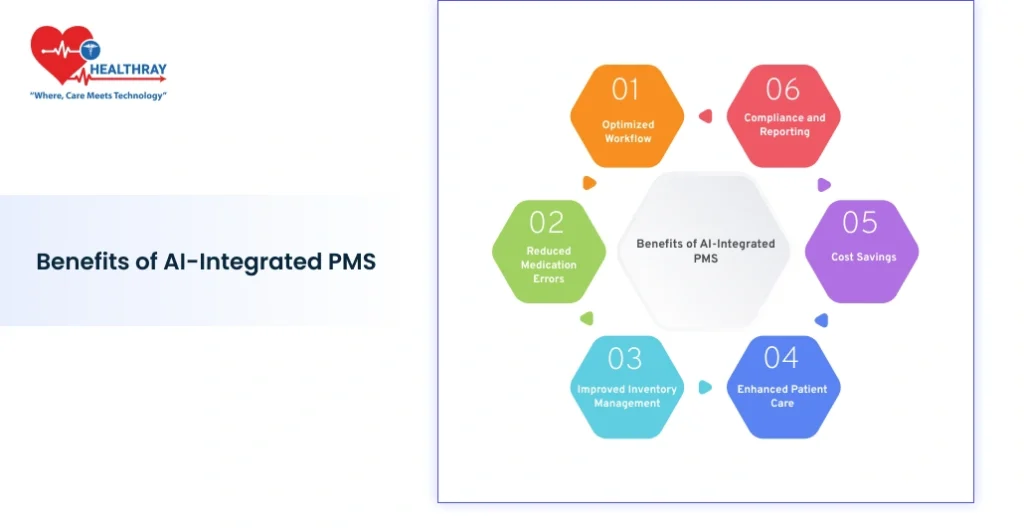
An AI-integrated Pharmacy Management Software (PMS) isn’t just another tool—it’s a game-changer for pharmacies looking to simplify their operations and improve patient outcomes. Let’s break down some key benefits.
Optimized Workflow
AI eliminates bottlenecks by automating repetitive tasks like inventory updates, prescription processing, and billing. Staff can focus on patient care instead of getting buried in administrative duties. For example, automated prescription refills save time and ensure medications are always in stock.
Reduced Medication Errors
Human errors in prescription filling can lead to serious consequences. AI systems double-check prescriptions for accuracy, flagging issues like incorrect dosages or potential drug interactions. This reduces the risk of mistakes and improves patient safety.
Improved Inventory Management
AI tracks inventory in real time, analyzing trends to predict demand. This ensures you don’t run out of critical medications or overstock items that might expire. Automatic reordering keeps shelves stocked efficiently without manual oversight.
Enhanced Patient Care
AI-integrated PMS offers personalized insights for patient care. It can send reminders for medication refills or provide data-driven recommendations for treatments based on a patient’s history. This leads to better adherence to treatment plans and improved health outcomes.
Cost Savings
Automation and predictive analytics reduce waste, whether it’s in staff time, medication inventory, or operational processes. Over time, this adds up to significant savings for the pharmacy, improving overall profitability.
Compliance and Reporting
Staying compliant with healthcare regulations can be overwhelming. AI simplifies the process by keeping records organized, generating accurate reports, and flagging potential compliance risks. This ensures your pharmacy operates smoothly within legal guidelines.
AI doesn’t just make processes faster—it makes them smarter. It’s about creating a system that works for you, allowing your team to spend more time on what matters most: serving your customers.
Implementing AI in Your Pharmacy
Switching to AI-integrated Pharmacy Management Services might feel like a big leap, but with the right approach, it’s manageable and rewarding. Here’s a step-by-step guide to ensure a smooth transition.
Assess Your Current System
Start by evaluating your existing PMS. Identify pain points like inventory shortages, delays in prescription processing, or challenges with reporting. This will help you pinpoint areas where AI can make the biggest impact.
Choose the Right AI-Integrated Pharmacy Management Software
Not all AI-integrated systems are the same. Look for one tailored to pharmacy needs. Key features to prioritize include:
- Inventory tracking and automation
- Error detection in prescriptions
- Compliance reporting tools
- Analytics for decision-making
Research vendors, read reviews, and request demos to find a system that aligns with your pharmacy’s goals.
Plan the Integration Process
Work with your PMS provider to create a detailed integration plan. This should include:
- A timeline for implementation
- Steps to migrate existing data (patient records, inventory lists, etc.)
- Contingency plans to minimize disruptions during the transition
Train Your Staff
Introducing AI means adapting to new workflows. Organize training sessions to ensure your team understands how to use the new system. Focus on features like automated inventory management and prescription validation. Empower your staff to ask questions and provide feedback.
Monitor and Optimize
Once the AI-integrated PMS is live, monitor its performance closely. Check if:
- Inventory is being restocked as predicted
- Errors in prescriptions have decreased
- Reports are generated without issues
Gather feedback from your team and make adjustments as needed to fine-tune the system.
Calculate the ROI
Track the time, money, and resources saved after implementing the system. Compare these savings to the initial investment in the software. A clear understanding of the ROI will help justify the decision and guide future upgrades.
With these steps, you’ll be ready to harness the full potential of AI in your pharmacy. A well-planned implementation sets the stage for smoother workflows, happier customers, and a more profitable business.
Case Studies: Real-World Examples of AI-Integrated Pharmacy Management Software Success
Sometimes, seeing how others have succeeded makes all the difference. Here are a couple of examples that highlight how pharmacies have transformed their operations by adopting AI-integrated Pharmacy Management Software (PMS).
A Small Community Pharmacy Reduces Errors by 40%
A community pharmacy in a suburban area struggled with frequent prescription errors due to manual data entry. They implemented an AI-integrated PMS that automated the verification of prescriptions against patient records. The system flagged discrepancies such as incorrect dosages and potential drug interactions.
Results:
- Prescription errors reduced by 40%.
- Staff saved an average of 15 hours per week previously spent on double-checking prescriptions.
- Patients reported increased trust in the pharmacy due to enhanced accuracy.
Inventory Management Revolutionized for a Chain of Pharmacies
A regional pharmacy chain faced challenges with managing inventory across multiple locations. Stockouts of critical medications and overstocking of slow-moving items were common issues. After adopting AI-integrated PMS, the system analyzed sales trends and predicted demand at each location.
Results:
- Inventory costs dropped by 25% due to optimized restocking.
- Stockouts of essential medications were eliminated.
- The chain achieved better coordination between branches, reducing waste.
Enhanced Compliance for an Urban Pharmacy
An urban pharmacy with a high volume of prescriptions struggled to meet compliance requirements for healthcare audits. Their AI-powered PMS included automated reporting and real-time alerts for compliance risks.
Results:
- Audit preparation time was reduced by 50%.
- Reports became more accurate and consistent.
- The pharmacy passed its next audit with zero discrepancies.
These examples show how AI can address common pain points and create measurable improvements in workflow, efficiency, and customer satisfaction. Whether you’re running a single pharmacy or managing a chain, AI can tailor solutions to meet your specific needs.
Challenges and Considerations When Adopting AI-Integrated PMS
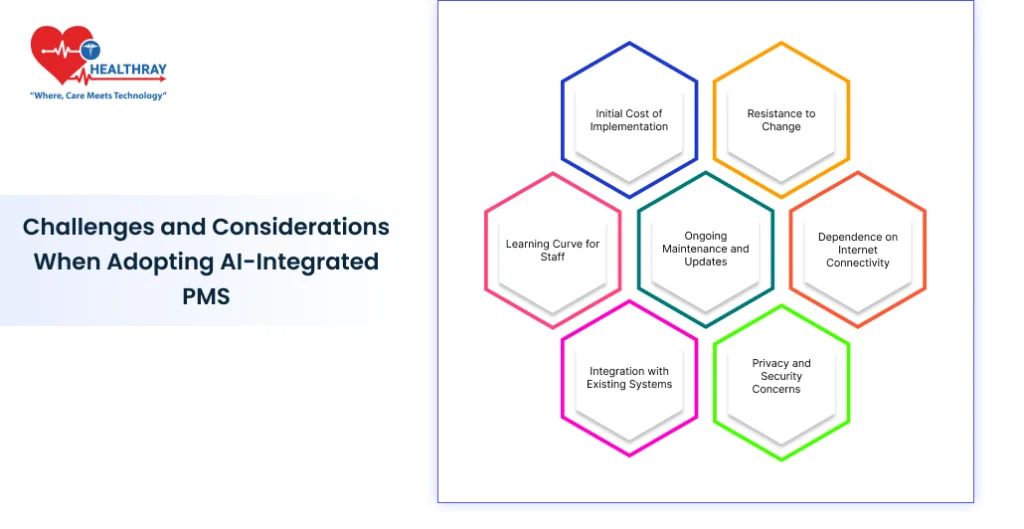
While the benefits of AI-integrated Pharmacy Software Systems are significant, implementing it isn’t without its hurdles. Understanding these challenges upfront can help you prepare for a smoother transition.
Initial Cost of Implementation
AI-powered PMS can be a financial commitment. The upfront costs for software, hardware upgrades, and staff training might feel daunting for smaller pharmacies. However, it’s important to evaluate the long-term return on investment, such as reduced errors and improved efficiency, which often outweigh the initial expenses.
Learning Curve for Staff
Introducing new technology means your team will need time to adapt. Staff members might feel overwhelmed by unfamiliar systems, especially if they’re used to traditional workflows. Comprehensive training sessions and ongoing support are critical to easing this transition.
Integration with Existing Systems
Not all AI-integrated PMS platforms are compatible with existing pharmacy systems. Migrating data such as patient records and inventory information can be challenging, particularly if the new system requires extensive customization. Choosing a provider with proven integration capabilities can reduce these risks.
Privacy and Security Concerns
AI systems rely on vast amounts of data, including sensitive patient information. Ensuring compliance with healthcare regulations like HIPAA is non-negotiable. Pharmacies must work with vendors that offer robust data encryption, regular security updates, and compliance monitoring to protect against breaches.
Dependence on Internet Connectivity
Many AI-integrated systems are cloud-based, requiring stable internet access. Pharmacies in areas with unreliable connectivity may experience interruptions in their workflow. Backup solutions and offline functionality can help mitigate this issue.
Resistance to Change
Pharmacy owners or staff may be hesitant to embrace AI due to fear of automation replacing human roles. It’s crucial to position AI as a tool that supports the team rather than replaces it, highlighting its role in reducing repetitive tasks and enabling staff to focus on higher-value activities.
Ongoing Maintenance and Updates
AI systems aren’t a set-it-and-forget-it solution. They require periodic updates, performance monitoring, and technical support to function at their best. Budgeting for ongoing maintenance ensures the system continues to deliver value over time.
By acknowledging these challenges, you can approach AI integration with realistic expectations and a clear plan. Addressing these considerations early on helps create a strong foundation for successful implementation.
Future Trends in AI for Pharmacy Management
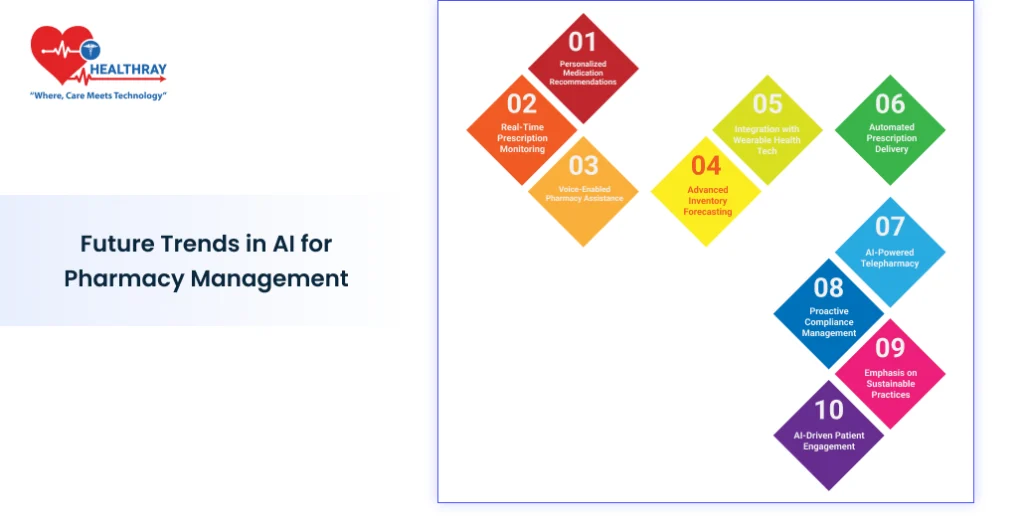
AI is rapidly evolving, and its applications in Pharmacy Software are becoming more advanced. Keeping an eye on emerging trends can help pharmacies stay ahead of the curve and continue delivering exceptional care.
Personalized Medication Recommendations
AI is moving toward providing highly personalized medication plans. By analyzing patient history, genetic information, and lifestyle data, future systems could recommend the most effective treatments for individual patients, improving outcomes and reducing trial-and-error prescriptions.
Real-Time Prescription Monitoring
In the future, AI could monitor prescriptions in real-time to detect irregularities or fraudulent activity. This ensures better compliance with healthcare regulations and reduces the risk of prescription drug misuse.
Voice-Enabled Pharmacy Assistance
Voice-activated AI tools are expected to become a staple in pharmacies. These systems will allow pharmacists to retrieve information, manage tasks, or answer patient questions hands-free, saving time and improving efficiency.
Advanced Inventory Forecasting
Current AI systems predict inventory needs based on past trends, but next-generation solutions will incorporate external factors like seasonal demand, health crises, and local events. This will result in even more accurate forecasting and inventory optimization.
Integration with Wearable Health Tech
AI will increasingly sync with wearable health devices like fitness trackers or smartwatches. Pharmacies could use this data to monitor patient health remotely, offer timely interventions, or adjust medication plans based on real-time feedback.
Automated Prescription Delivery
The integration of AI with delivery systems, including drones or autonomous vehicles, is on the horizon. Pharmacies will be able to offer faster and more efficient prescription deliveries, especially in remote areas.
AI-Powered Telepharmacy
Telehealth has seen a major surge, and AI is set to enhance telepharmacy services. Features like automated patient counseling, virtual pharmacist consultations, and digital prescription management will make healthcare more accessible.
Proactive Compliance Management
Future AI systems will go beyond flagging compliance issues; they’ll proactively guide pharmacies to meet changing regulatory requirements. This includes automatic policy updates, real-time alerts, and in-depth audits.
Emphasis on Sustainable Practices
AI is expected to drive sustainability in pharmacy operations. From reducing medication waste through precise inventory management to optimizing energy usage in storage, pharmacies can expect greener operations with the help of AI.
AI-Driven Patient Engagement
Pharmacies will rely more on AI to engage with patients. Automated reminders for medication refills, personalized health tips, and interactive chatbots for 24/7 assistance will become the norm.
The future of AI in pharmacy management is promising. By staying informed and adopting emerging technologies, pharmacies can continue to innovate and provide exceptional service.
Conclusion
AI-integrated Hospital Management System isn’t just a trend; it’s a practical solution for tackling the challenges pharmacies face every day. From reducing medication errors to optimizing workflows and improving patient care, this technology offers tangible benefits that transform operations.
While the journey to implementation requires careful planning, the payoff is substantial. Pharmacies can save time, reduce costs, and build stronger relationships with their customers by delivering more reliable and personalized care.
